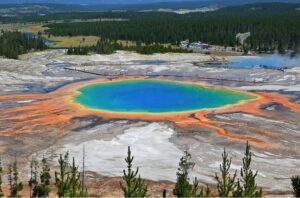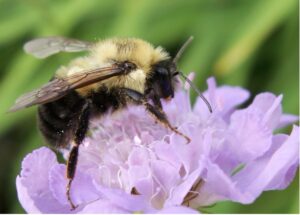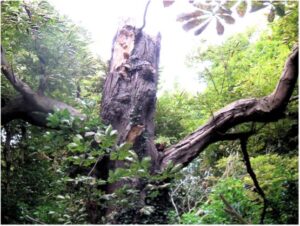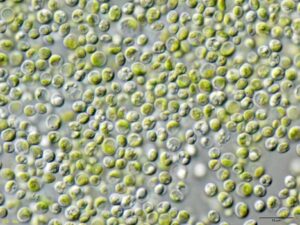Cover Image: A small coffee farm in a forested area. (Source: Wikimedia Commons, Frank_am_Main)

Coffee plays a prevalent, arguably vital, role in the lives of countless people. Although the coffee bean itself claims fame in homes, a recent case study suggests that coffee pulp could aid in tropical forest restoration on land previously used for agriculture. Coffee pulp is the softer, outside part of a coffee cherry that surrounds the bean in living plants. In fact, the pulp makes up about 29% of the fruit’s dry weight (Aristizabal-Marulanda et al., 2017). In the traditional, “dry method” for processing coffee beans the beans are dried with the pulp still intact until the “moisture content” of the cherries reaches only 11%. In the more modern, “wet method,” the pulp is removed before the beans are dried, and is therefore able to be used further (“10 Steps from Seed to Cup,” n.d.). However, coffee pulp is often considered toxic due to its high levels of caffeine and tannin, an organic compound derived from gallic acid that inhibits digestion. This makes disposal difficult (Pandey et al., 2000). Although after some processing, it can be used for other purposes such as complementing animal feed and culturing fungi, giving coffee pulp a new life (Aristizabal-Marulanda et al., 2017). More recent research has implied that coffee pulp can also be used to bolster reforestation efforts.
In 2018, researchers from ETH-Zurich and the University of Hawai`i covered an area of about 35 by 40 meters with half a meter of coffee pulp, leaving a similar area as a control plot with no added pulp. The two plots of land were approximately 10 meters away from each other and were located on a former coffee farm in Coto Brus county in Costa Rica (Cole & Zahawi, 2021). Immediately before coffee pulp application and two years into the experiment, four soil cores were collected and analyzed for soil nutrients. Additionally, visual observations were made every six months, and after each year, plant species were identified and the diameter of any trees present were measured (Cole and Zahawi, 2021).
According to Dr. Rebecca Cole, “The area treated with a thick layer of coffee pulp turned into a small forest in only two years while the control plot remained dominated by non-native pasture grasses.” Because coffee pulp is so nutrient-rich, it was able to significantly increase the presence of carbon, nitrogen, phosphorus, and other elements necessary for healthy forest succession. After two years, the treated area had a canopy that was nearly four times higher than the control plot. Additionally, the treated plot provided about 83% canopy cover at heights over 2 meters compared to only about 22% coverage in the control plot at the same heights. For the treated plot, almost half of this coverage was at 5 meters or more in height, while the control plot had almost no plant species reaching this height. In fact, the control plot grew only one tree species (H. appendiculatus), while the treated plot grew five species of tree. The increase in species diversity could be credited to the layer of pulp, as it killed the present pasture grasses, which heavily compete with native species, and the pulp layer likely inhibited the germination of grass seeds in the area (Cole & Zahawi, 2021). Overall, the coffee pulp treated plot showed dramatic improvements in nutrient levels, canopy growth and cover, and biodiversity compared to the control plot.
Although using coffee byproducts appears to be an efficient and cost-effective method for environmental restoration, further research is needed before any strong conclusions can be drawn. The results recorded on this treated plot seem significant, but the results of one study can only be extrapolated so far. In the future, similar studies comparing treated plots to control plots must be done in a variety of landscapes, and over a longer period of time. The researchers involved in the present study acknowledge valid concerns about the widespread use of coffee pulp treatment, such as insects inhabiting the composting material, runoff impacting the effects of the coffee pulp as well as surrounding watersheds, and cost efficacy. Despite the current uncertainties, though, the evidence for using coffee pulp treatment is optimistic, and holds great potential for forest restoration efforts.
References
Aristizabal-Marulanda, V., Chacon-Perez, Y., & Cardona Alzate, C. A. (2017). The biorefinery concept for the industrial valorization of coffee processing by-products. Handbook of Coffee Processing By-Products, 63–92. https://doi.org/10.1016/B978-0-12-811290-8.00003-7
British Ecological Society. (2021, March 29). Forests on caffeine: Coffee waste can boost forest recovery. ScienceDaily. Retrieved July 9, 2021 from www.sciencedaily.com/releases/2021/03/210329085936.htm
Cole, RJ, Zahawi, RA. (2021). Coffee pulp accelerates early tropical forest succession on old fields. Ecol Solut Evidence. 2:e12054. https://doi.org/10.1002/2688-8319.12054
Pandey, A., Soccol, C. R., Nigam, P., Brand, D., Mohan, R., & Roussos, S. (2000). Biotechnological potential of coffee pulp and coffee husk for bioprocesses. Biochemical engineering journal, 6(2), 153–162. https://doi.org/10.1016/s1369-703x(00)00084-x
10 steps from seed to cup. (n.d.). National Coffee Association. https://www.ncausa.org/about-coffee/10-steps-from-seed-to-cup
Related Posts
Thermophilic Life in Yellowstone National Park Challenges the Physical and Chemical Limits of Survival
Cover Image: Grand Prismatic Spring in Yellowstone National Park (Source:...
Read MoreInsect Microbiome Gives Hope for New Antibiotic Discovery
Figure 1: Actinobacteria were isolated from 56% of the insect...
Read MoreWhale Size Correlates with Feeding Pattern Efficiency
Figure 1: Blue Whale Surfacing off the Coast of Oregon...
Read MoreGeorge Washington Carver: “The Peanut Man”
Figure 1: George Washington Carver: “The Peanut Man” (Photograph ca. 1910)...
Read More“Living” Droplets Can Produce Renewable Hydrogen
Figure 1: A microscopic image of Chlorella vulgaris, a species...
Read MoreOlivia Brado






